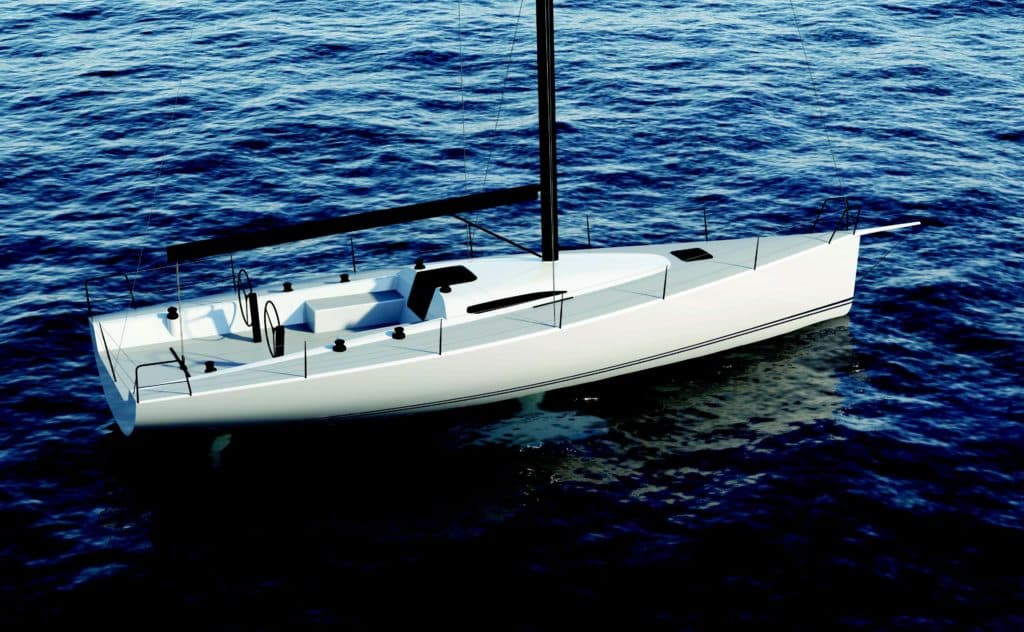
Aquila 45
Every October Sailing World‘s Boat of the Year judging team assembles in Annapolis, Md., to sail the latest designs. We can always count on variety—and a few late arrivals—and this year’s fleet is following tradition. Our judging panel includes sailmaker Chuck Allen, yacht designer Greg Stewart, and boatbuilding veteran Rob Mazza. This trio will be tasked with looking past the marketing hype and giving each boat a thorough shakedown. Here’s our pre-test crib sheet, and you can find our entire list of nominees here.
Aquila 45
Aquila is a new brand, and this 45-footer comes straight from China, where it’s built by Sino Eagle Yachts. The Chinese government originally commissioned Reichel/Pugh to design this boat for the development of a national sail-training/racing fleet, but when government funds went elsewhere, Sino Eagle kept the ball rolling. The first one to arrive in the states is the “Limited Edition” racing version with all the bells and whistles. It’s loaded with performance gear, including a Southern Spars carbon rig package, B&G electronics, and carbon Harken hardware.
While it’s marketed as a cruiser/racer crossover with the creature comforts of an IRC-leaning design, the company says the boat will appeal most to the club racer. The sail inventory includes three jibs, four spinnakers, and even a staysail to keep the bow team busy. At 14,000 pounds, it’s on the heavier side (an IRC-friendly trait), but the sail area is generous at 2,852 square feet. The Limited Edition, delivered, is $659,000 and has an IRC TCC of 1.250. www.aquilasailingyachts.com
Corsair Sprint 750 Mark II

Our Boat of the Year rules stipulate a boat must be new. Simple modifications, like changing the rig dimensions and slapping on a “new model” sticker, don’t qualify an older design for a second BOTY look. If the updates are significant enough, however, we’ll allow it. Corsair Marine has done enough modification to its 24-foot Sprint 750 that it’s back in the contest. It has new float shapes, a new interior layout, and updated styling. The original Sprint 750 was a winning boat to begin with—a one-of-a-kind mini trimaran for class racing and day sailing. If great can get better, I know the judges will be looking forward to sailing this one again. www.corsairmarine.com
Farr 400
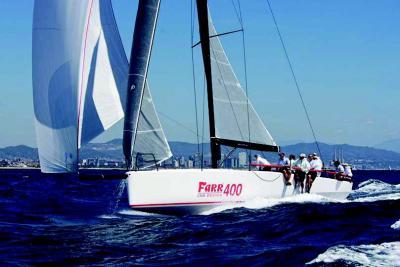
The Farr 400 One-Design, built by Premiere Composites Technology, in Dubai, is a serious racing machine set up by serious racing sailors. Its all-carbon hull with lifting keel and two-part mast makes it highly portable and less costly to move between international regatta venues. The deck-layout borrows from the TP52s, with numerous control lines led under-deck to a starboard utility winch and the foredeck hatch offset to port (for more efficient string takedowns). It’s impressive looking and powerful, weighing in at less than 9,000 pounds. Race it with a crew of eight. The boat comes race-ready with a full grand-prix inventory (mainsail, four jibs, four spinnakers); you’re on the racecourse for $521,000. www.farryachtsales.com
**
Marblehead 22**
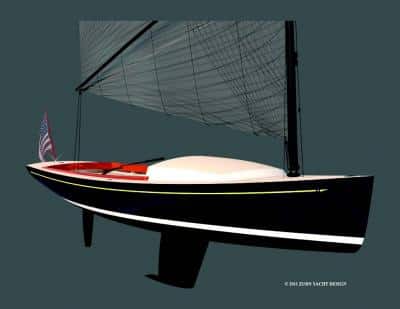
The trend with most modern daysailers is to apply the classic lines of a narrow hull and long overhangs, but sneak in a modern underbody with efficient foils. But the Marblehead 22, by designer Doug Zurn, and built by Samoset Boatworks in Maine, is a break from the norm. Using a 45-pound Hall Spars un-stayed rig and wishbone boom, it becomes an entirely different sort of daysailer, harkening back to the under appreciated Wyliecat 17. Such a rig can be placed well forward in the boat, which opens up the cockpit to a lounge-like 12 feet. There’s a little cuddy for gear and the aft lockers will fit a cooler. www.samosetboatworks.com
**
Pogo 2**
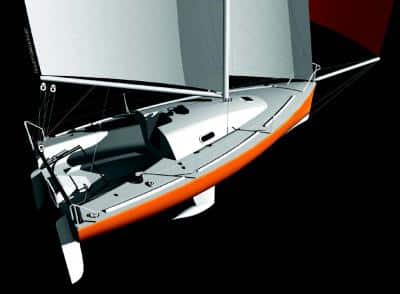
For those with aspirations of real offshore solo sailing—i.e. crossing oceans—the Mini class remains the most economical proving ground. Access to this scene comes in only two ways: tricked-out custom prototypes, or less expensive production designs. The Pogo 2 is a production kit built by Open Sailing in Marina Del Rey, Calif. As a production Mini, this boat incorporates less expensive materials (no carbon in the hull) and has an aluminum rig. With numerous Pogo 2s now sailing worldwide, the boat’s sail-handling systems have been refined, which means you, too, can be on your way to racing transatlantic for less than $60,000. www.opensailingusa.com
Tartan 4000
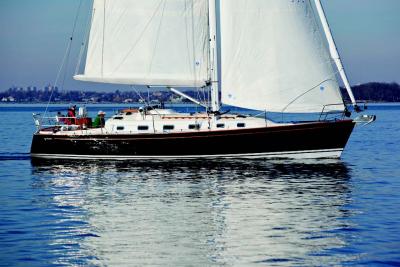
Weeknight club-racing fleets around the country, and even major distance races, have long seen performance cruisers doing able duty as offshore racers. And as far as Ohio-based Tartan Yachts is concerned, its new Tartan 4000 is exactly what you want for distance racing in comfort. At 40 feet, it displaces 19,604 pounds and has a 7.5-foot keel so it’s plenty stable, but with a double-spreader carbon rig it’s light enough to get up and go when it needs to. And when it comes to shifting into cruising mode, the 4000 has all the luxury to get away for the week in style, for a sail-away price of $500,000. www.tartanyachts.com
Topper Topaz 14CX
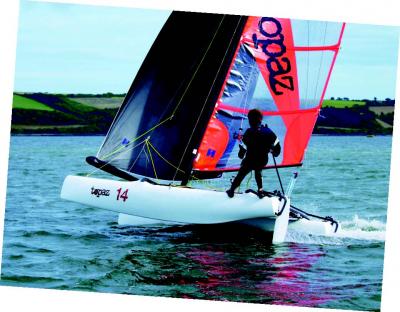
The cat community has long bemoaned the lack of a viable youth entry-level boat that yacht clubs could offer to junior sailors. The Topaz 14CX could be the answer. Yes, it’s rotomolded. And yes, it looks like another recreational cat, but from what we’ve been told by cat-sailing experts who have sailed it, the boat is a stiff platform with a powered up sail plan that’s perfect for two teenagers. The 242-pound, 14-footer has skegs rather than daggerboards, so beaching it, or pulling it up on a dock, is easy. It comes equipped with a twin trapeze, a Dacron main and jib, and a 107-square foot asymmetric spinnaker. A two-piece mast simplifies transport. The retail price is $10,000. www.toppersailboats.com









